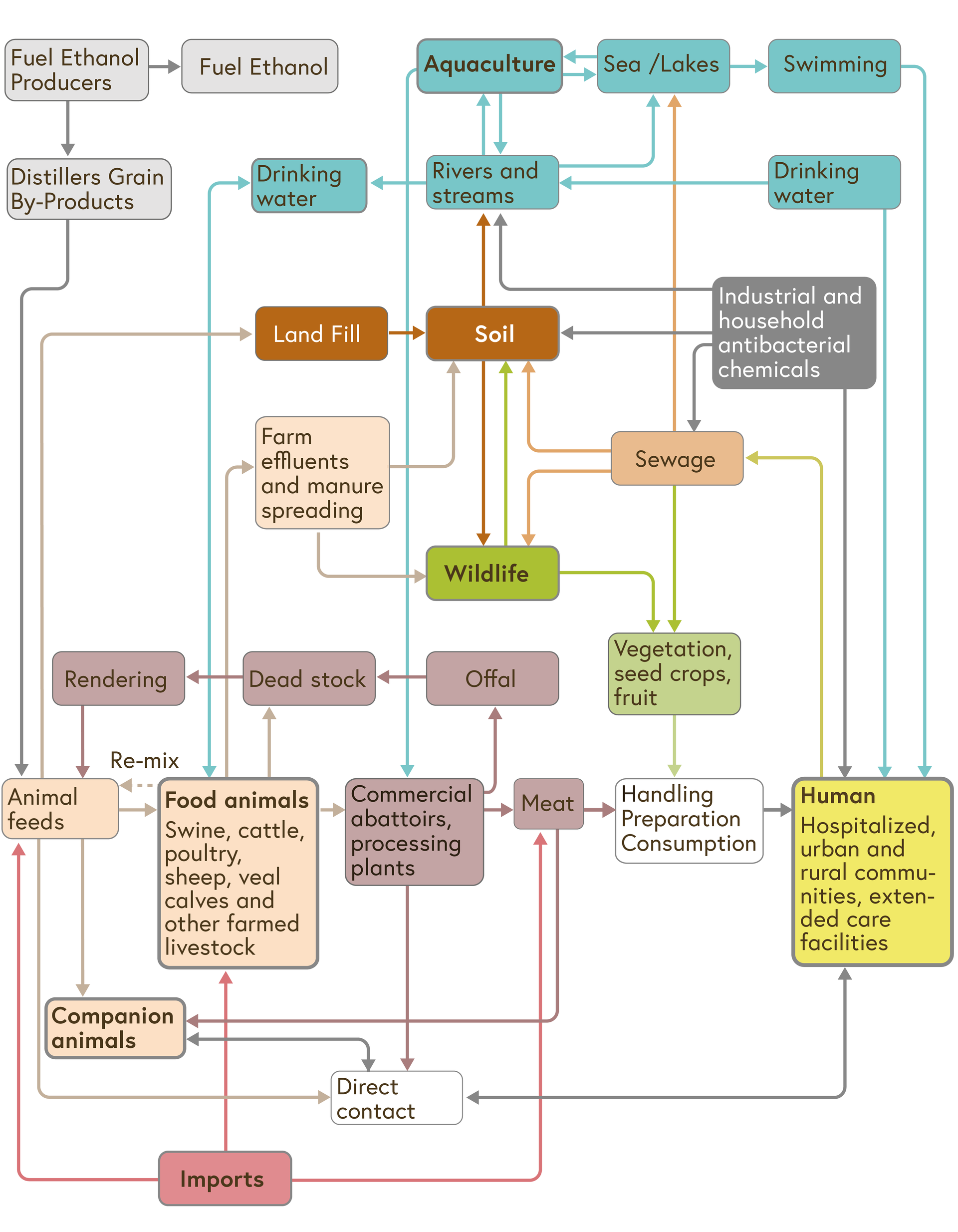ECOSYSTEM APPROACHES TO HEALTH AND COURSE SUMMARY
6.3
Integrated antimicrobial resistance surveillance
It is not only when it comes to infectious diseases that public and animal health sectors may profit by working closely together. There are many other areas where such a closer cooperation bears fruit.
Canada is spearheading such developments at the institutional level. It features, for instance, the Canadian Science Centre for Human and Animal Health (CSC) in Winnipeg, bringing together a human and animal health laboratory for highly contagious diseases under one roof. Of equal importance is the Canadian Integrated Program for Antimicrobial Resistance Surveillance (CIPARS). CIPARS represents a systems approach to the surveillance of antimicrobial resistance in a complex human-environment or social-ecological system (Zinsstag et al. 2011).
Such an approach has a high potential advantage over conventional single sector antimicrobial resistance surveillance programmes in hospitals, companion animal health or the food chain: it maintains a cross-sector systemic perspective of the circulation of potentially resistant bacterial strains between humans, animals and the environment. This systems approach not only involves multiple sectors but also multiple surveillance approaches including passive and active surveillance components, each with potentially different objectives.
The multi-pronged approach allows CIPARS to assess different aspects of antimicrobial resistance, and when data from each of the individual components are considered together in an integrated fashion the result is a more informed, encompassing view of antimicrobial resistance in Canada. An additional benefit is that CIPARS provides a framework to support related research projects.
Epidemiology of Antimicrobial Resistance

Flowchart of the Canadian Integrated Programme for Antimicrobial Resistance Surveillance (CIPARS)
© Courtesy of Rebecca Irwin, Guelph ON, Canada
Systems understanding combined with the latest molecular typing methods may further decrease the time to detection of new resistant strains. Through sharing of activities and resources, CIPARS should have a considerable programmatic advantage over human or animal surveillance systems that are not connected.
References
Zinsstag, J. et al. (2011). From ‘One Medicine’ to ‘One Health’ and Systemic Approaches to Health and Well-being, in: Preventive Veterinary Medicine 101, 148-156.
License
University of Basel
Downloads
